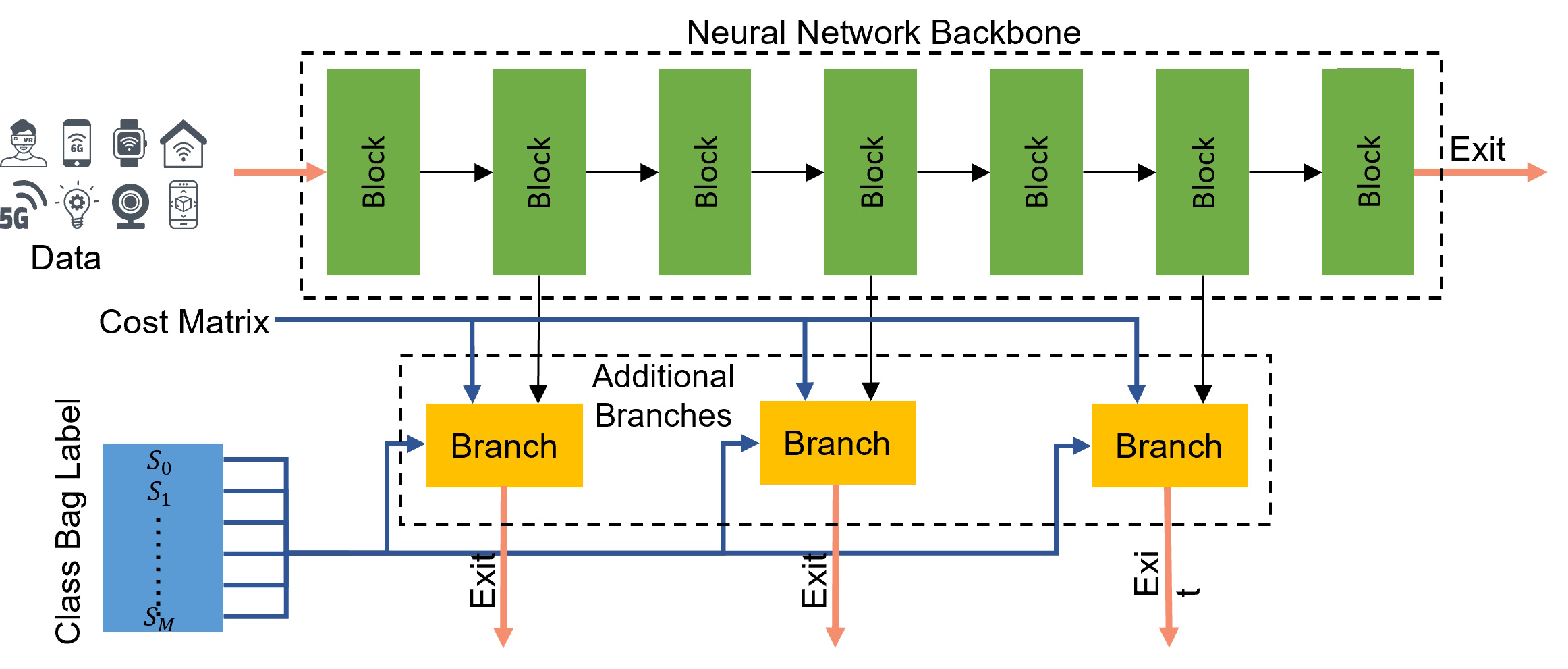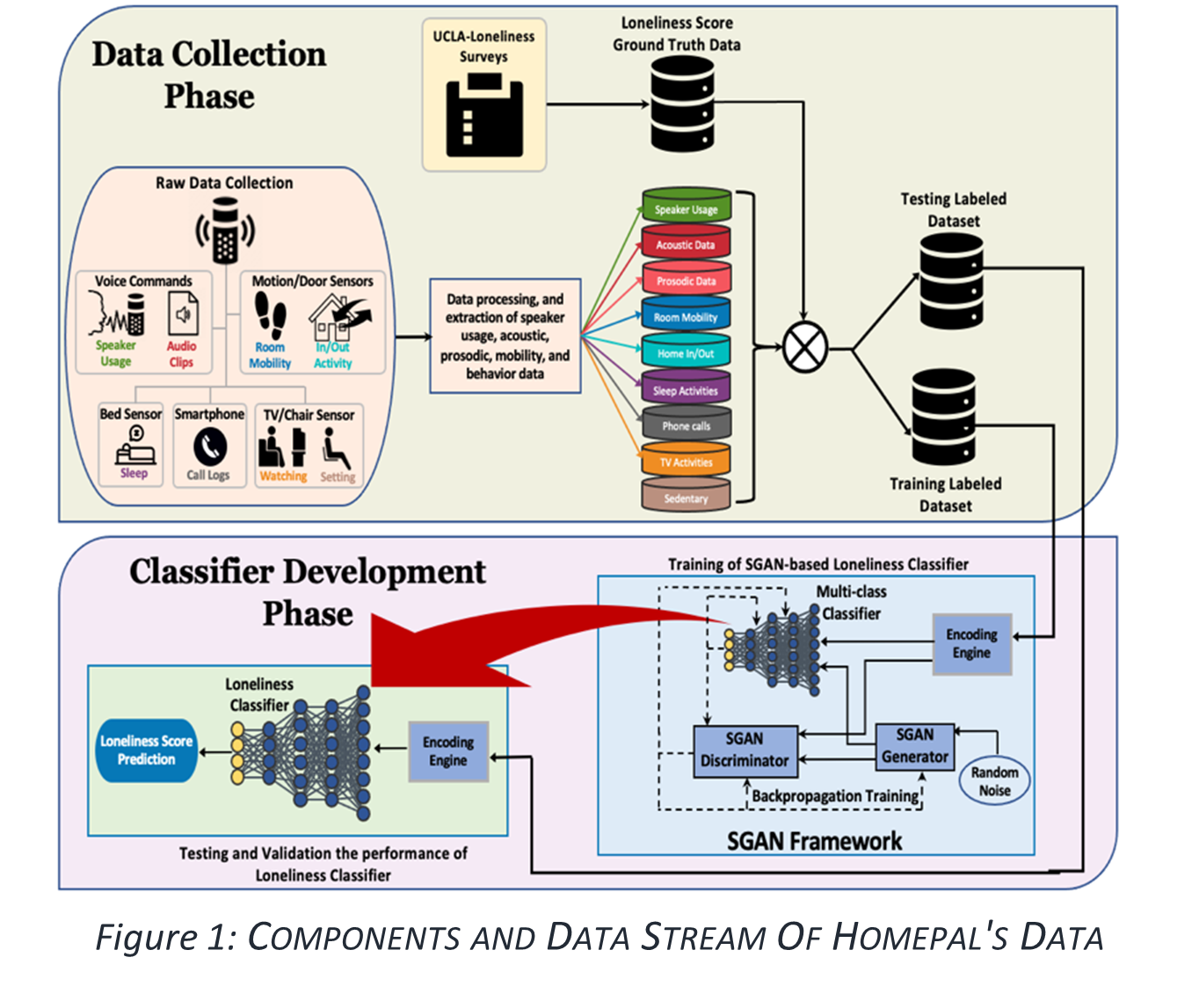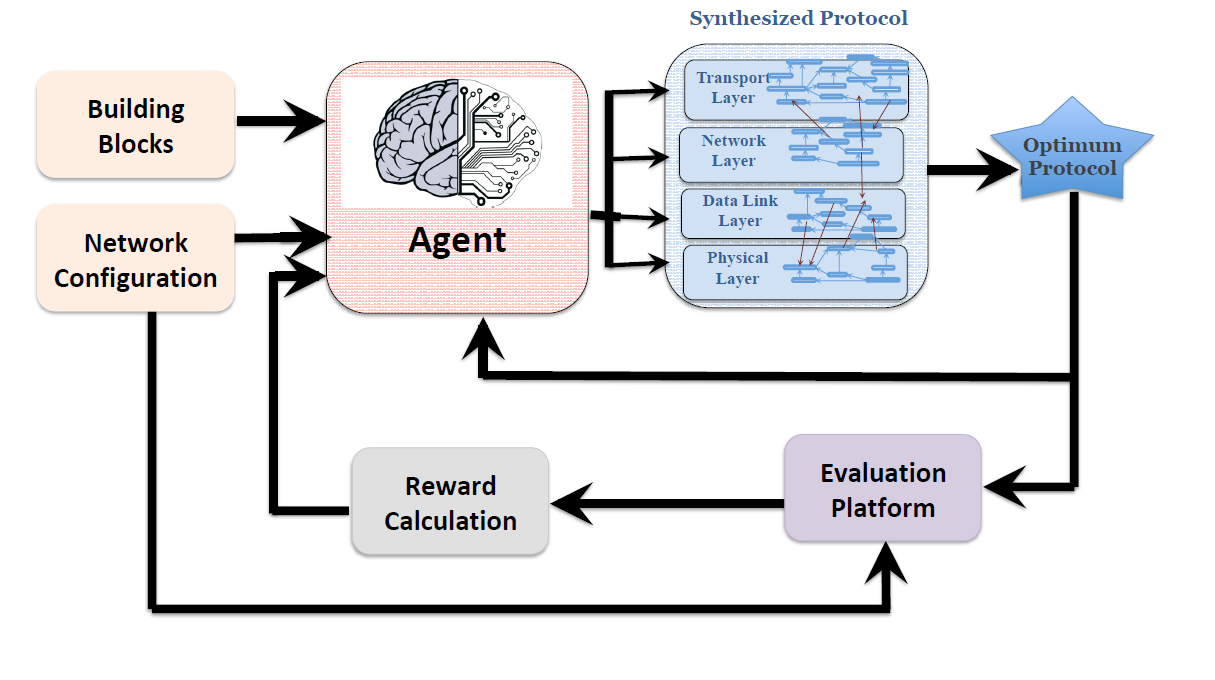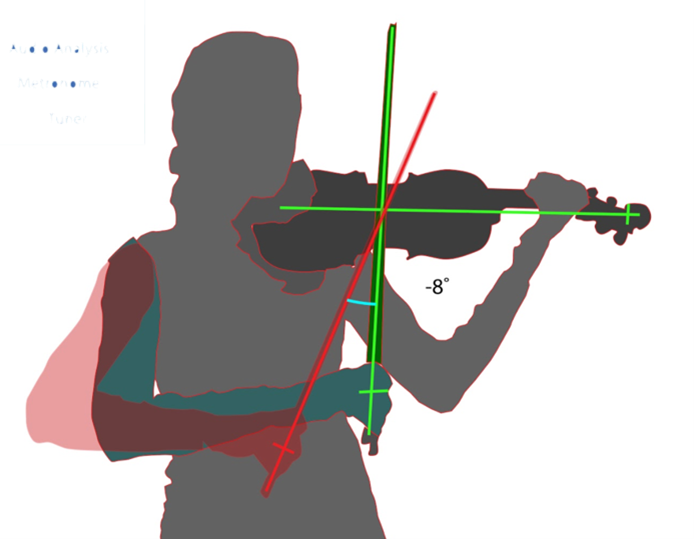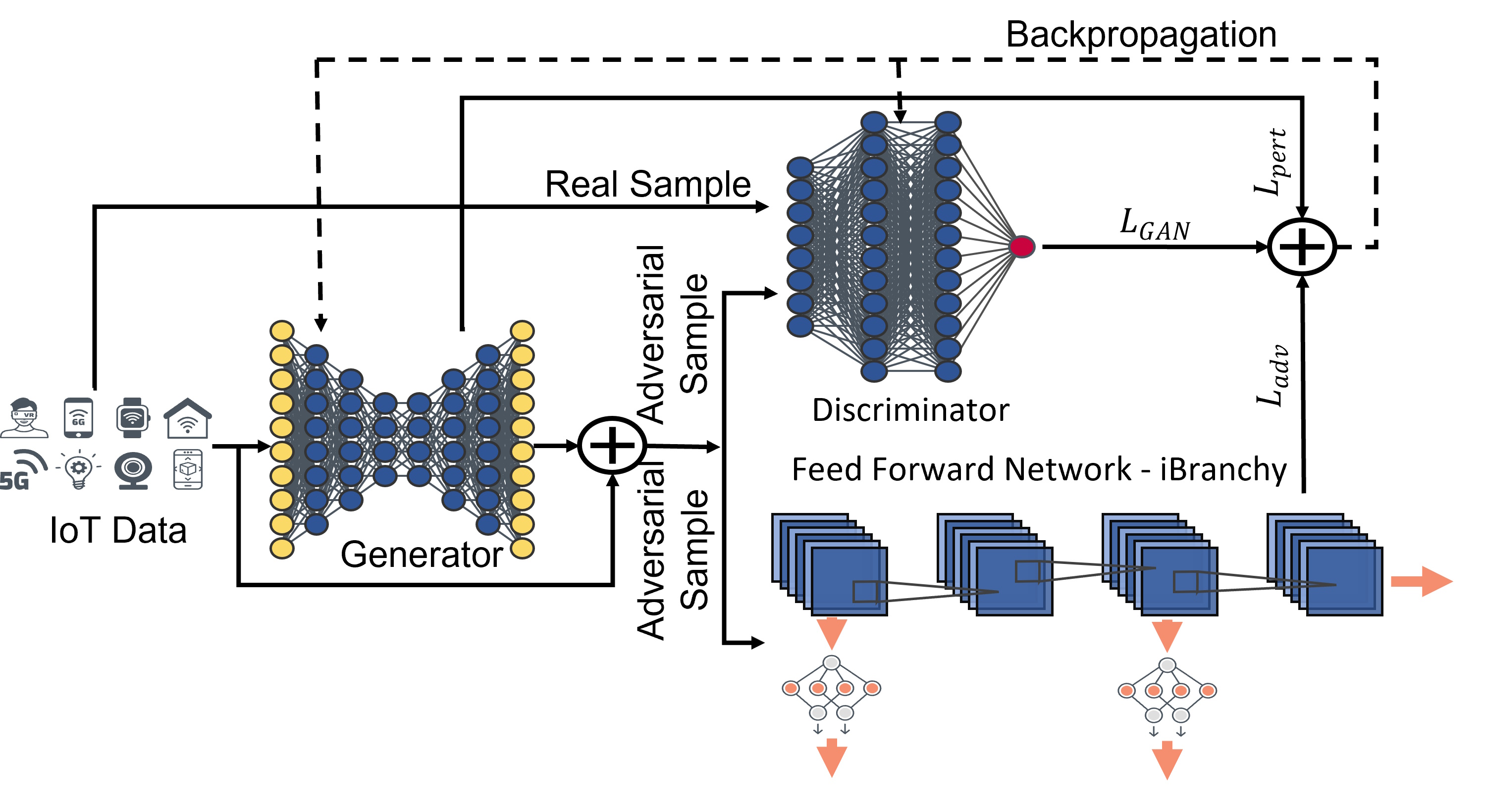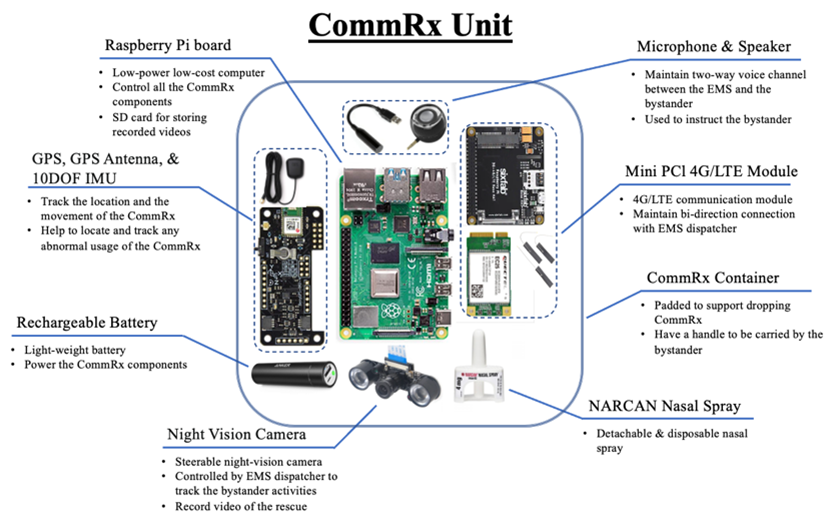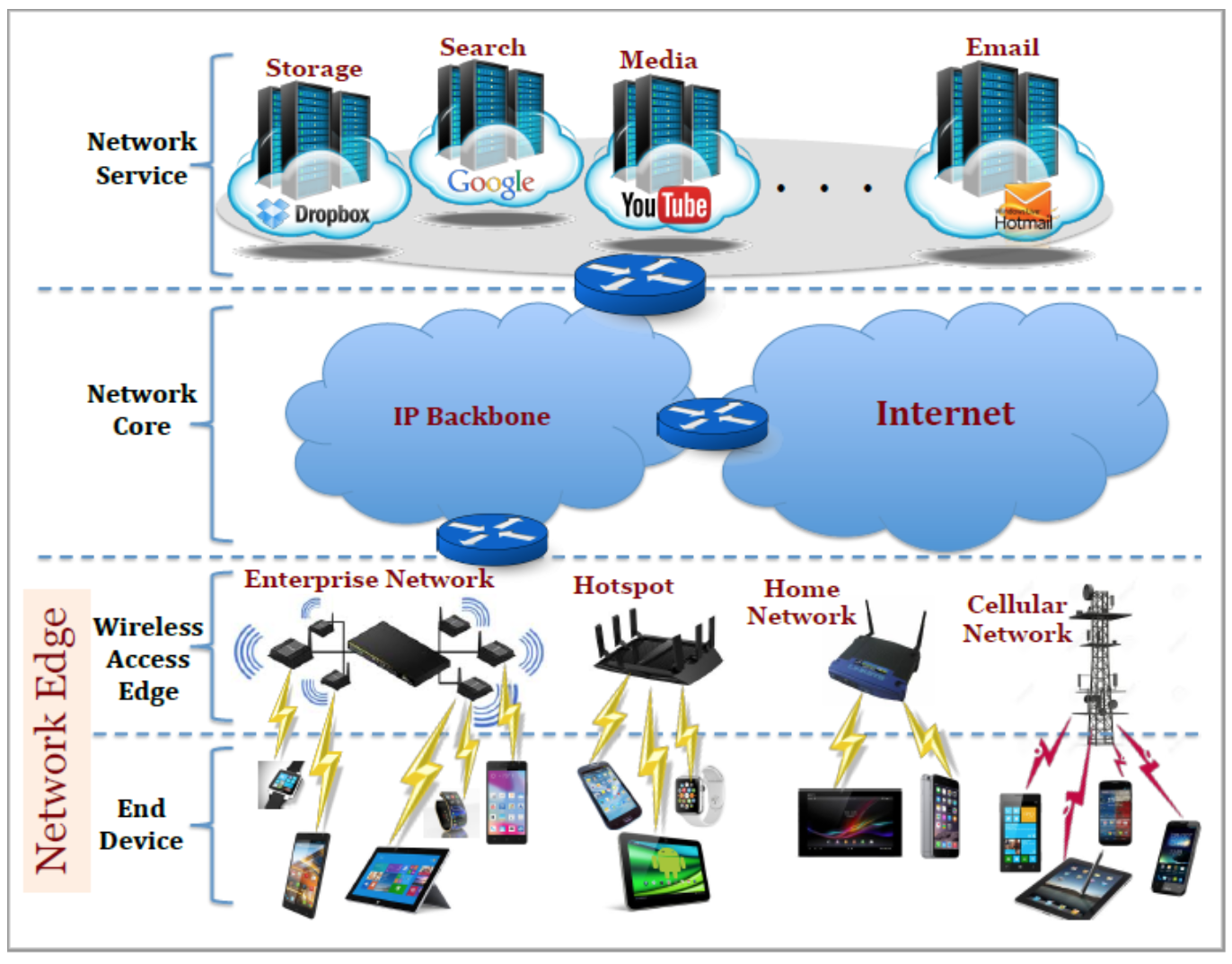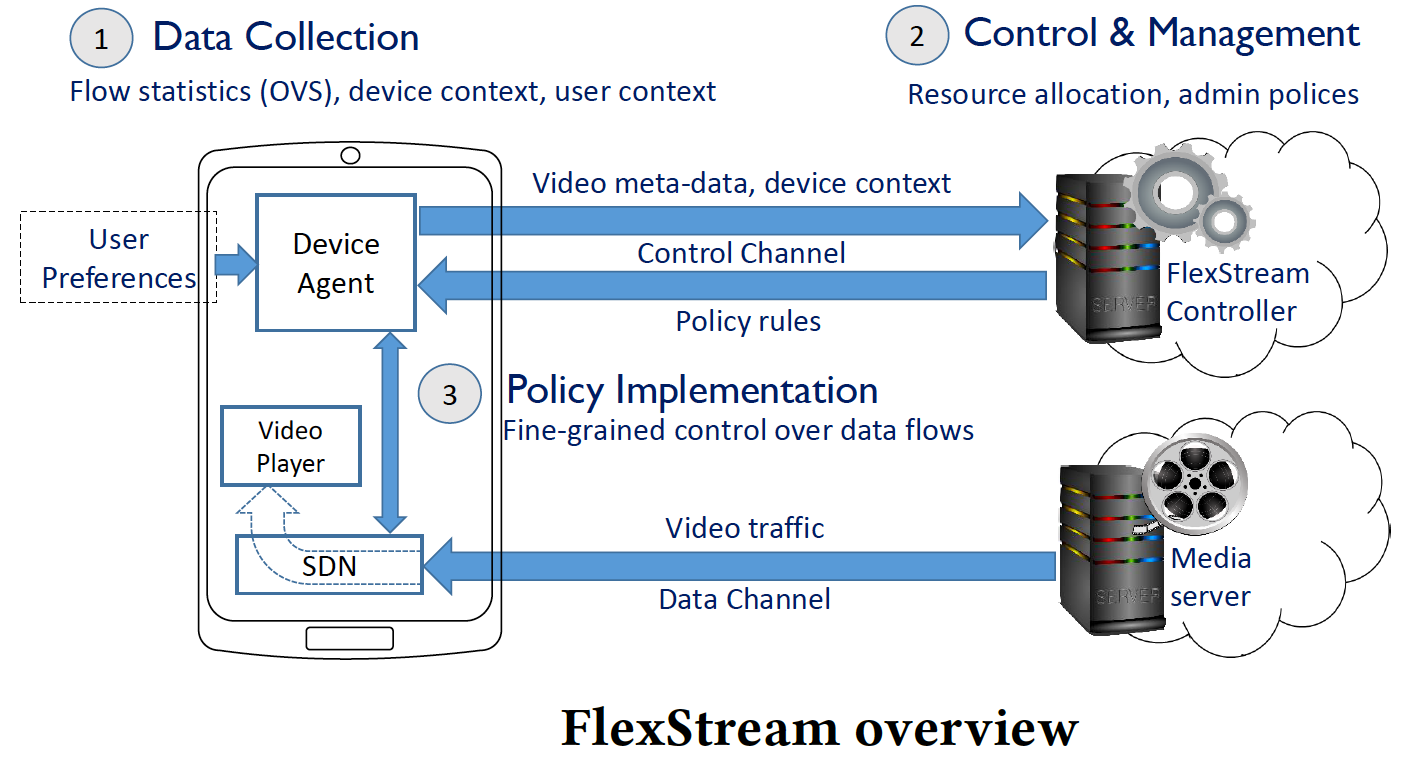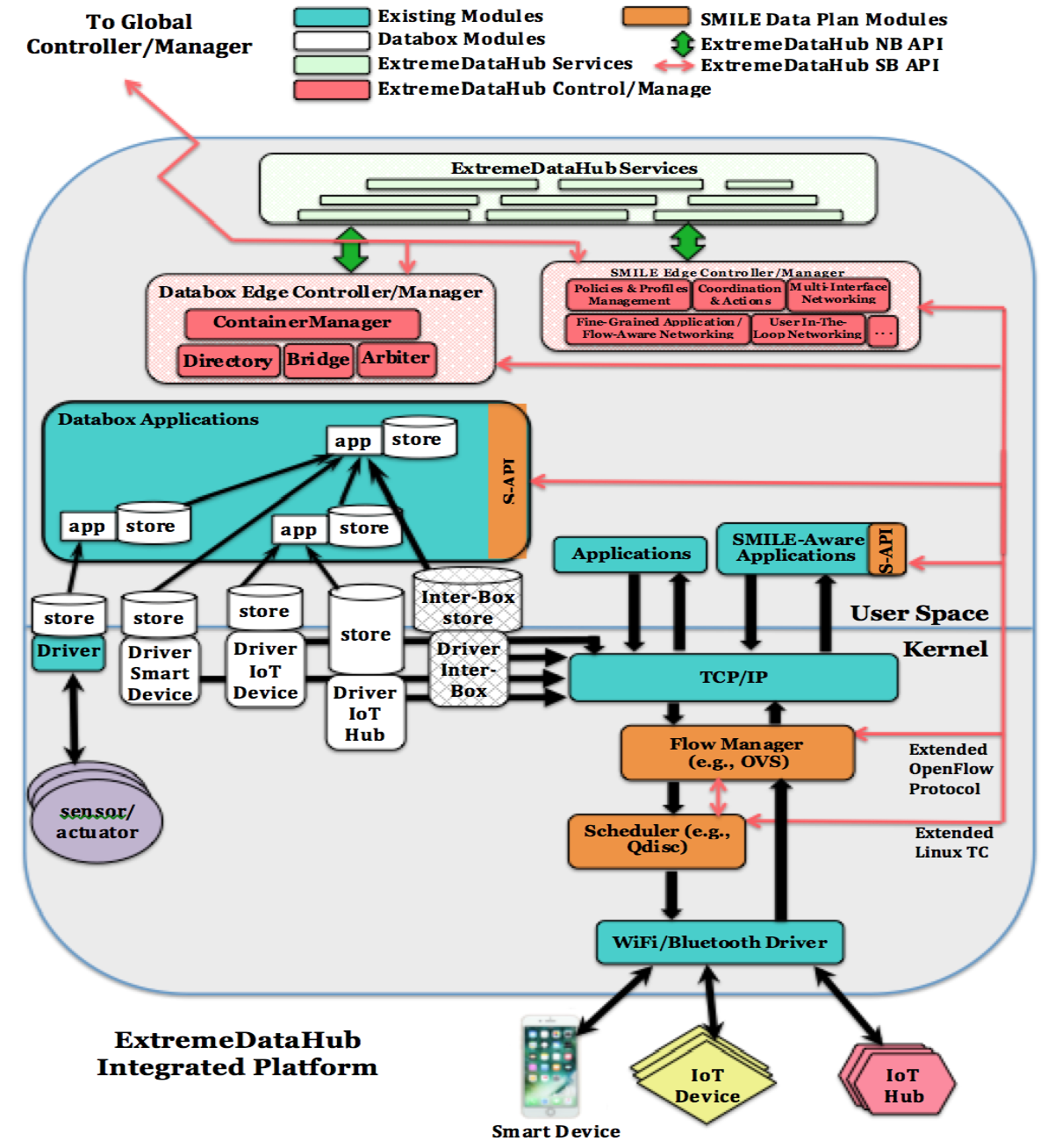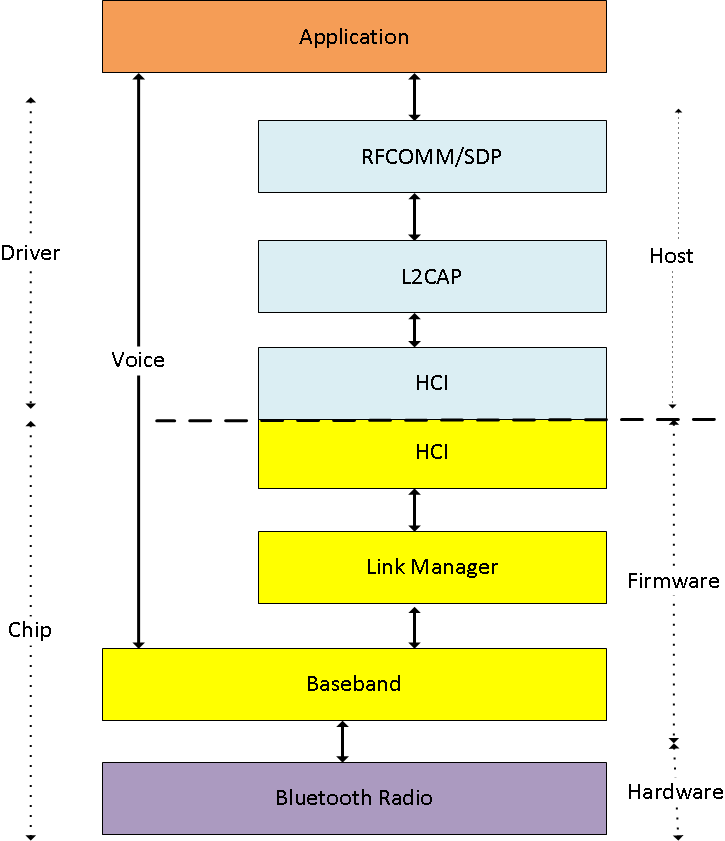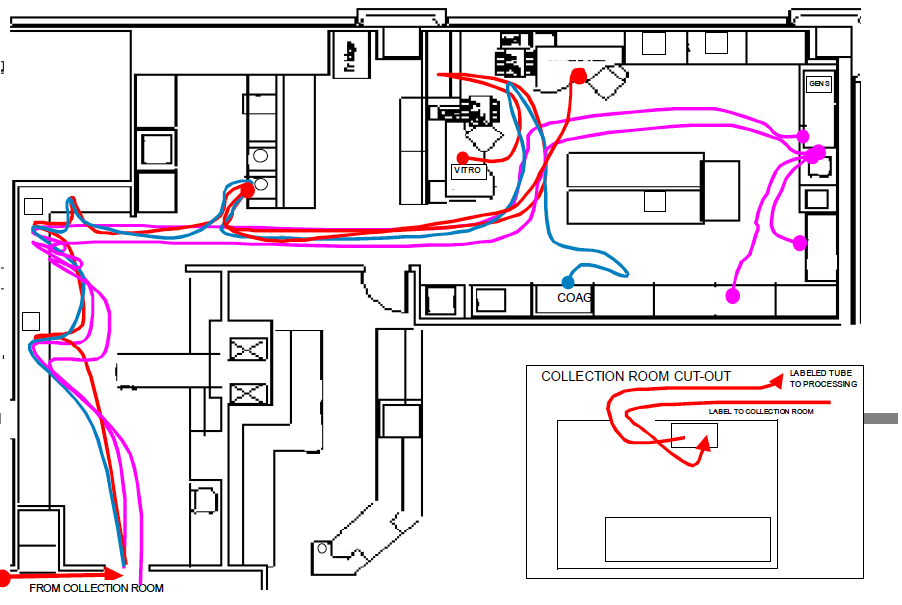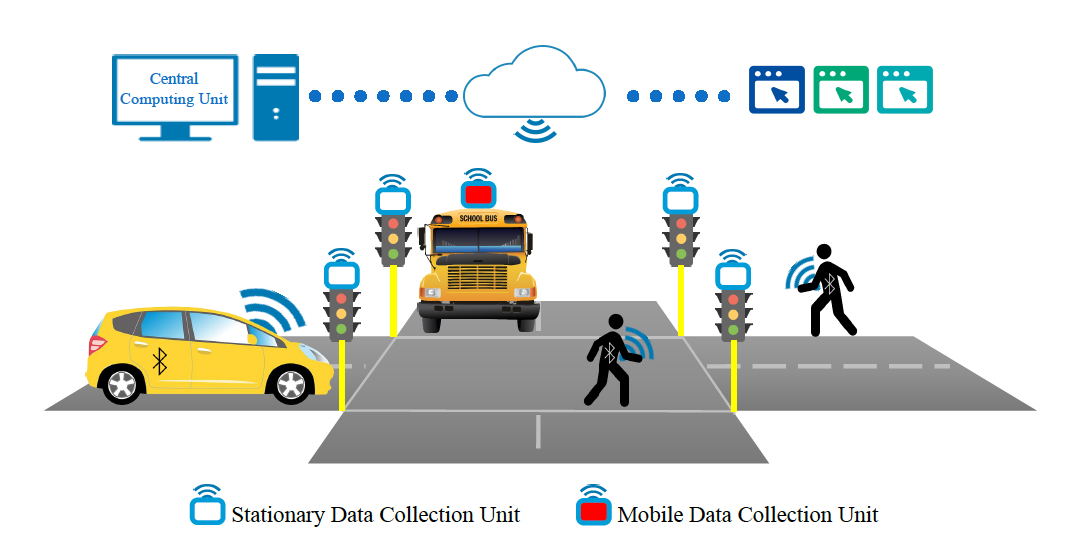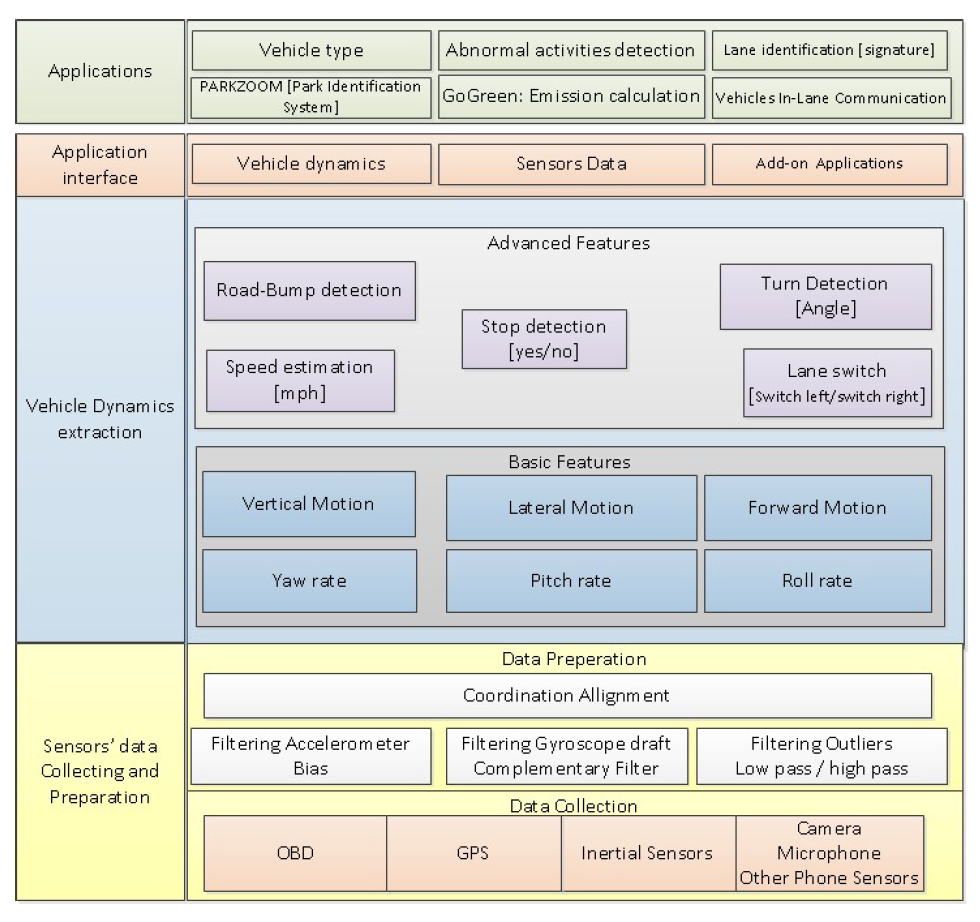Current Projects
Generative AI is revolutionizing communication by enabling intelligent, automated content creation across text and multimedia, improving efficiency, accuracy, and personalization. It supports diverse applications, from customer service to real-time translation, while advancing technologies like transformers and reinforcement learning to enhance global knowledge sharing. We introduce LoRaFlow, a generative modeling approach using diffusion transformers and rectified flow to reconstruct LoRa signals from noisy inputs, improving demodulation. Integrated with existing LoRa infrastructure, LoRaFlow enhances signal recovery under low SNR conditions with minimal hardware changes, extending the range and reliability of IoT communications.
Edge-based and IoT devices have experienced phenomenal growth in recent years due to rapidly increasing demand in emerging applications that utilize machine learning models such as Deep Neural Network (DNN). However, one of DNN's main drawbacks lies in the large storage/memory requirement and high computational cost, which become a major challenge in adopting these models to edge devices. This led to the development of early-exit models such as BranchyNet that allow for the decision to be made on earlier stages by attaching dedicated exits to the inner layers of the architecture. However, existing early-exit models do not have control over what class should exit when. The need for these novel class-aware models can be observed in multiple edge applications where specific important classes need to be detected earlier due to their temporal importance. In this project, we aim to develop and design ClassyNet, the first early-exit architecture capable of returning only selected classes at each exit. This allows for speedups in inference time for sensitive classes by enabling the first layers to be deployed on edge devices, saving significant computational time and edge resources while maintaining high accuracy.
The popularity of edge-based IoT devices has surged in recent years. This is largely due to the growing demand for emerging applications such as remote health monitoring, augmented reality, and video analytics. These applications typically require low latency, low power consumption, and high efficiency, and often rely on machine learning models like Deep Neural Network (DNN) models. To meet these application requirements, the machine learning models must support faster inference and less computation. In response, Dynamic DNNs have been developed, which perform conditional computations and selectively activate portions of the network model for inference. These Dynamic DNNs have become crucial for edge-based applications, as they help save computational time and edge resources. However, our research has uncovered a vulnerability in Dynamic DNNs that we call Dynamic DNN Adversarial attacks (DDAS). Unlike traditional adversarial attacks, which focus solely on classification accuracy, our attack impacts the hosting edge-based IoT device resources like battery and latency. The goal of this project is to show that the DDAS attack is highly effective under various scenarios. Additionally, we also aim to investigate potential countermeasure methods against this novel type of attack and how to strengthen existing model against these attacks.
The US is in the midst of an unprecedented opioid crisis in which 130 people lose their lives from an opioid overdose (OD) each day. These are particularly tragic events because they often affect young people, many of whom could be rescued by early administration of naloxone antidote which comes in an FDA approved nasal spray form that can be given by a lay bystander. Despite programs making the antidote publicly accessible and availability of training on its use, <5% of bystanders witnessing an opioid OD actually administer naloxone to the victim, either because it is unavailable or they don’t know how…or are afraid…to use it on their own. An opioid OD kills by causing the victim to stop breathing and, within a couple of minutes, if not reversed by the antidote, the heart stops beating resulting in death. Once this occurs, the chances of survival decline approximately 10% per minute. (3) It is often not physically possible for first-responders to reach the victim and administer the antidote quickly enough to save their life once they stop breathing. The most efficient urban Emergency Medical Services (EMS) systems in the US and throughout the world may get to the curb in an average of 8-10 min (longer in suburban or rural areas) after 9-1-1 dispatch, but it typically takes several more minutes for them to reach the victim, do an initial assessment, and administer medication. (4, 5) Sadly, it is often too late to save the victim. The challenge of saving more opioid overdose victims comes down to time. Data from a recent NIH sponsored study involving paramedics from 55 top EMS agencies in 10 cities showed the median time from the call to 9-1-1 until first drug administration in a cardiac arrest patient (similar EMS response as an opioid OD) was 16 minutes (roughly 18 minutes from when the patient stopped breathing), and the situation gets even worse in suburban and rural areas, where service is often provided by volunteer fire first responders and paramedics, and the travel distances and time intervals are much longer. Our proposed solution to mitigate this crisis is to develop, optimize, and test a novel drone-delivered naloxone system that will provide more rapid delivery of the antidote to opioid overdose faster than traditional EMS and guide the lay responder on how to administer the naloxone via real time audio/video direction.
Networking protocols, practically, are designed through long-time and hard-work human efforts. However, these designed protocols, typically, are non-optimum with limited flexibility under several network scenarios and conditions. Moreover, due to evolving network technologies as well as increasing demands of modern applications, ”general-purpose” protocol stacks are not always adequate and need to be replaced by application tailored protocols. Therefore, replacing this inefficient human-based protocol designing process by a novel paradigm that enables rapid design of efficient, flexible, and high performance protocols that intelligently adapt to different device characteristics, application requirements, user objectives, and network conditions is highly desired. In this project, DeepMAC, we explore the first basic steps toward our vision of replacing the human driven network communication design by machine using ML techniques. This vision considers an intelligent system that automates the design of on-line adaptive protocols only by interacting with and learning from the environment, without having any prior knowledge. In this envisioned framework, network protocol stack is decomposed into core functionalities (e.g., switching, routing, congestion control, reliable connection, Backoff, etc.) in which the intelligent agent designs an efficient protocol by selecting the optimum set of functionalities in response to device characteristics, application requirements, user objectives, and network conditions.
With growing healthcare demands, the Internet of Medical Things (IoMT) has grown significantly in recent years and is dominating the healthcare industry. However, these smarter and advanced medical devices are “more” complicated in terms of software and hardware, with several defects and vulnerabilities that have been found and can lead to possible malicious attacks. Healthcare organizations are the new focus of attackers for carrying out IoMT-focused cyberattacks, which are becoming more common. In recent years, ransomware and distributed denial of service (DDoS) attacks are malware-based popular attacks on IoMT devices. Cyberattacks and disruptions in clinical care can have a catastrophic effect on patient safety, which trickles down to the medical staff’s responsiveness. Moreover, because different medical devices have varying vital capabilities, it is critical to enable differentiated network services for these devices with varying critical levels of operation under network dynamics. Hence, it becomes crucial to efficiently detect and identify any malicious network activities to eliminate or minimize the impact of these attacks, as well as to detect and identify network traffics belonging to different medical equipment.
The threats to the cybersecurity of today’s organizations’ networks are numerous, vastly varied and constantly evolving. According to a very recent report, about 81 percent of US organizations have faced a cyberattack. Operational downtime was the biggest impact for those organizations (55 percent), followed by compromised customer data (37 percent), and compromised end-user safety (36 percent). Most recently, the COVID-19 pandemic has reared its ugly head – cyberattacks have become more common and have large increased very recently. However, the scale of contemporary network traffic volumes makes monitoring and visualizing real-time information considerably more challenging for human ability to process. Although many IDSs utilizes several visualization techniques and notification mechanisms to provide administrators with an overall view and specific information about particular traffic or attacks on the network, they often still fail to represent the events in an understandable way, and it is quite difficult to understand the relevance of aggregate traffic when receiving only the alarms for individual intrusion records. Moreover, these tools are not well suited for continuous monitoring scenarios since network administrators will suffer from loss of concentration, visual fatigue, temporal demand, and frustration increase.
Completed Projects
The aim of this project is to develop smart biofeedback system for the right arm motor schemas of violinists for the purpose of monitoring and training the various violin’s bow movements, gestures, and techniques. Music, like sports, is a highly competitive field that promotes long practice hours. Musicians require very good feedback loops and expert training to improve. The technique of violin playing, like that of golf or tennis, is highly visible to the trained eye. Although the left hand is responsible for pitch, the harder skill to master is that of the right hand – the bowing mechanics. The bow arm’s movements vary in extremely subtle ways and have their own governing laws of speed, weight, proximity to the bridge of the violin, hair angle (tilt), and trajectory of movement. The teacher/student apprentice model has been the primary, in fact the only, learning methodology for violinists for centuries. In this model, an expert teacher uses verbal critique and demonstration to teach one on one. Violinists use mirrors and video recording during independent practice, but an exact feedback mechanism for the mechanics of the bow has never been produced. When we as teachers say, “slow down the bow speed”, students are not actually able to quantify how much slower they are drawing the bow in their next iteration. This project contributes to the field of violin pedagogy and practice violin playing as there is currently no biofeedback system for this type of information of feedback information in practice and teaching.
Flexible Adaptive Video Streaming on End Devices using Extreme SDN HTTP Adaptive Streaming (HAS) is the dominant approach to deliver over-the-top video today. Unfortunately, HAS comes with several drawbacks, especially in mobile environments. HAS clients (players) are shown to exhibit instability, stalls and poor quality when they compete over the bottleneck link. In this project we develop FlexStream, a framework that leverages: (i) a centralized or edge manager component in the network that specifies a policy controlling resource allocation (e.g., bandwidth), and (ii) a distributed SDN component, which implements that policy via Open vSwitch (OVS), essentially offloading the fine-grained functionality to the end device. We refer to these SDN components on mobile end devices as extreme SDN
As the number of smart devices and their applications continue to growth, transmission of mobile traffic data over wireless links (i.e., Wi-Fi and cellular links) is exploding. A recent Cisco report predicts that by 2019, enough mobile devices will exist to create more than 24 exabytes (24,000,000 terabytes) of traffic per month. To cope with the explosion of mobile devices coupled with a growing proliferation of cloud or edge-based applications, it is now necessary to have greater visibility and control over the traffic generated from the client devices in order to deliver optimal performance and a high Quality of Experience (QoE) to a variety of users and applications. With the recent advancement in Software Defined Network (SDN), we believe that an SDN-like paradigm needs to be pushed to wireless-edges and mobile clients (i.e., network edge as shown) to provide optimal network performance between the cloud and wirelessly connected clients. In this project, we aim to design, develop and evaluate SMILE - SMart and Intelligent wireLess Edge framework that supports SDN-like paradigm on user's smart devices and network wireless-edges. SMILE enables network wireless-edges to become more active and to host several services (including partial cloud services) to enhance users quality of experience.
Internet of Things is becoming the key enabler for highly intelligent data rich applications and is the major technology behind smart computing domains like smart homes, connected health, connected cars, automated enterprise workflows, Smart Cities and Smart grid. Ericsson predicts the number of connected IoT devices to be around 18 billion by 2022. This significant growth and penetration of smart and IoT devices come along with a tremendous increase in the number of smart and IoT applications. These various applications, which support various domains and services, generate and access different data patterns such as periodic, event-based, realtime and continuous data. Consequently, these different applications result in diverse traffic characteristics that require different performance levels of reliability, loss, and latency. To cope with this various traffic characteristics and requirements, it is now necessary to have greater visibility and control over the traffic generated from smart and IoT devices in order to guarantee an optimized performance of smart and IoT applications as well as high quality of experience to users. In this research, we design and develop an open-source, flexible, and programmable networked edge device that collates and mediates access to our sensitive and personal data, under the data subjects control as well as to cope with various characteristics and requirements of smart and IoT applications that access this data in order to provide better performance and quality of experience to users.
The intrusive nature of smart devices granted access to huge amounts of raw data. Researchers seized the moment with complex algorithms and data models to process the data over the cloud and extract as much information as possible. However, the pace and amount of data generation, in addition to, networking protocols transmitting data to cloud servers failed short in touching more than 20% of what was generated on the edge of the network. On the other hand, smart devices carry a large set of resources, e.g., CPU, memory, and camera, that sit idle most of the time. Studies showed that for plenty of the time resources are either idle, e.g., sleeping and eating, or underutilized, e.g. inertial sensors during phone calls. These findings articulate a problem in processing large data sets, while having idle resources in the close proximity. In this project, we flip the concept of cloud computing, instead of sending massive amounts of data for processing over the cloud, we distribute lightweight applications to process data on users' smart devices. We develop LAMEN, a three-tier framework to orchestrate anonymous devices in the proximity and prepare them for hosting complex services currently performed over the cloud. We envision this approach to enhance the network's bandwidth, grant access to larger datasets, provide low latency responses, and more importantly involve up-to-date user's contextual information in processing.
Bluetooth technology continues to evolve and expand, taking advantage of the desirable attributes and features it possesses in comparison to other wireless technologies. Bluetooth devices are going to become a major player in the much-hyped Internet of Things (IoT) market. The objectives of this project are to design, develop, and disseminate a flexible and extensible Bluetooth Open-Source Stack (BOSS) platform that will enable new research opportunities for the wireless and mobile computing community. The platform will enable development and evaluation of schemes, services, and applications across all layers of the Bluetooth stack, through the creation of a community-maintained, open-access repository. More specifically, BOSS targets providing an open source implementing for the Bluetooth protocol firmware shown in the yellow section in the figure based on Bluetooth Low Energy (BLE) specifications Version 4.0.
Mobile devices such as smart phones have a number of sensors that can be exploited to solve a number of problems in health care delivery. In this paper we use accelerometer, gyroscope, and compass sensors to solve a location tracking problem common to many emergency departments. An emergency department is not friendly to be visually surveyed, layout consists of many isolated islands, and workstation layout is not standardized. An automated tool to create spaghetti diagrams of movements of personnel in a non-intrusive way is the problem we are reporting in this paper. A preliminary prototype shows very encouraging results of producing paths. We also identify challenges and our approach to meet them.
Wi-Fi is becoming widely popular network interface for data communication in smart devices. However, the Wi-Fi network still has several inefficiencies in terms of high energy consumption, unfairness between co-located nodes, and bandwidth poor utilization. In this project we like to address these issues of the Wi-Fi network by integrating the mic/speaker of the smart phones as a parallel communication channel. Our idea is to propose a novel framework of communication using mic/speaker in order to develop a more efficient Wi-Fi network communication for smart devices. The non-interferential nature with Wi-Fi network and low power consumption is the biggest advantage of using audio communication channel in parallel with WiFi. On the other hand, slow propagation and low data rate of the acoustic channel are some biggest challenges we are addressing in order to implement the Audio-WiFi framework.
Given that intelligent transportation systems (ITS) is a major critical aspect of smart cities concept that is getting a rising attention in the last decade, several smart devices-based low-cost services have been developed addressing ITS challenges. Therefore, one of my research directions is on how to utilize wireless technologies and mobile computing in developing smart systems and services for traffic transportation. One of these research projects is BlueSys - a novel distributed Bluetooth-based system to enhance safety and driving experience in metropolitan areas. BlueSys is a cost-effective, low maintenance and efficient sensing platform that utilizes the Bluetooth devices existing nowadays in vehicles (i.e., built-in Bluetooth, on-board mobile phones, hands-free devices) to collect traffic data such as the actual number of vehicles, their speeds, positions, queue lengths, lane blockages, etc. at the signalized intersections.
Intelligent transportation systems (ITS) use different methods to collect and process traffic data. Conventional techniques suffer from different challenges, like the high installation and maintenance cost, connectivity and communication problems, and the limited set of data. The recent massive spread of smartphones among drivers encouraged the ITS community to use them to solve ITS challenges. In this project, we develop SenSys - a smartphone framework that collects and processes traffic data and then analyzes and extracts vehicle dynamics and vehicle activities which can be used by developers and researchers to create their navigation, communication, and safety ITS applications. SenSys framework fuses and filters smartphone's sensors readings which result in enhancing the accuracy of tracking and analyzing various vehicle dynamics such as vehicle's stops, lane changes, turn detection, and accurate vehicle speed calculation that, in turn, will enable development of new ITS applications and services.
Driven by drastic fall in camera cost and the recent advances in computer vision-based video inference, organizations are deploying cameras in dense for different applications ranging from monitoring industrial or agricultural sites to retail planning. As an example, Amazon Go features an array of 100 cameras per store to track the items and the shoppers. Processing video feeds from such large deployments, however, requires a considerable investment in compute hardware or cloud resources. Due to the high demand for computation and storage resources, Deep Neural Networks (DNNs), the core mechanisms in video analytics, are often deployed in the cloud. Therefore, nowadays, video analytics is typically done using a cloud-centered approach where data is passed to a central processor with high computational power. However, this approach introduces several key issues. In particular, executing DNNs inference in the cloud, especially for real-time video analysis, often results in high bandwidth consumption, higher latency, reliability issues, and privacy concerns. Therefore, the high computation and storage requirements of DNNs disrupt their usefulness for local video processing applications in low-cost devices. Hence, it is infeasible to deploy current DNNs into many devices with low-cost, low-power processors. Worst yet, today video feeds are independently analyzed. Meaning, each camera sends its feed to the cloud individually regardless of considering to share possible valuable information with neighbor cameras and to utilize spatio-temporal redundancies between the feeds. As a result, the required computation to process the videos can grow significantly.
Experiences of loneliness are prevalent among older adults. Loneliness is a painful and pernicious state occurring when there is a perceived discrepancy between one’s optimal levels of social interactions and actual social relationships. Lonely older adults are more likely to experience functional decline, including activities of daily living, mobility, and stair climbing. Loneliness has been associated with negative health outcomes, such as increased morbidity and mortality, dementia risk, and cognitive impairment. With longer life expectancy rates, the number of older adults at risk for loneliness will increase substantially, presenting challenges to the healthcare system. However, studies reported that loneliness is a reversible condition, which could be achieved through appropriate interventions, such as improving physical health and social relationships. Detection measures are imperative to identify both lonely and at-risk individuals early enough to intervene before adverse health outcomes occur. The assessment of loneliness is challenging due to the social stigma of being labeled as lonely, resulting in underestimation. Although multidimensional scales exist that do not explicitly use the word “lonely,” healthcare providers do not routinely assess loneliness using validated instruments, making it challenging to be aware of the extent of loneliness among their older adult patients.
Online presence and the spread of misinformation have long been significant social and public health concerns. For example, during the COVID-19 pandemic, the amount and frequency of social media consumption increased, and information about COVID-19 spread rapidly on social media platforms, including both inaccurate and misleading information. This content appears to have contributed to beliefs in conspiracy theories and misinformation, as use of social media is associated with increased conspiracy theory and misinformation beliefs. This specific COVID-19 vaccine misinformation is in addition to the already high levels of misinformation about vaccines in general, and significant levels of misinformation related to other issues, such as climate change, which often claim that evidence-based scientific approaches are harmful or do not work. The viral spread of digital misinformation has become so serious that the World Economic Forum considers it among the main threats to human society. Therefore, training and educating people on how to recognize misinformation, verify sources, and then make responsible decisions on the sharing of information is therefore of paramount importance.
Virginia Commonwealth University (VCU) is launching an innovative project to tackle food waste and insecurity, positioning itself as a leader in sustainable food management. Central to this initiative is the implementation of advanced food waste tracking technologies, including RFID-tagged plates and machine learning tools, in Shafer Dining Hall. The project will divert unused food to on-campus Ram Fridges, community refrigerators managed by RVA Community Fridge, and older adult living facilities linked to VCU Health System. Through education, outreach, and real-time data displays, VCU aims to foster a culture of sustainability on campus. This interdisciplinary effort will serve as a model for other institutions, with plans to expand to hospital and athletic facilities, promoting long-term environmental responsibility and food equity across the Richmond region.
Modern computer networks, characterized by their high connectivity and heterogeneity, integrate a wide range of devices and protocols such as IoT, sensors, and robotic systems. While this complexity enables advanced services and adaptability, it also introduces significant security vulnerabilities, particularly in critical environments like the Internet of Battlefield Things (IoBT). To address these challenges, this project explores advanced cyber deception techniques aimed at mitigating reconnaissance-stage cyber threats. Two key contributions include MirageNet, a GAN-based framework for generating synthetic network traffic to enhance security and privacy, and MiragePkt, which synthetically generates network packets by learning from raw data. Additionally, a novel Graph Neural Network (GNN)-based approach for optimizing honeypot placement demonstrates superior performance over traditional methods, achieving 92.34% accuracy and a 139x speedup in inference. Together, these innovations highlight the potential of AI-driven solutions in fortifying modern network defenses.
